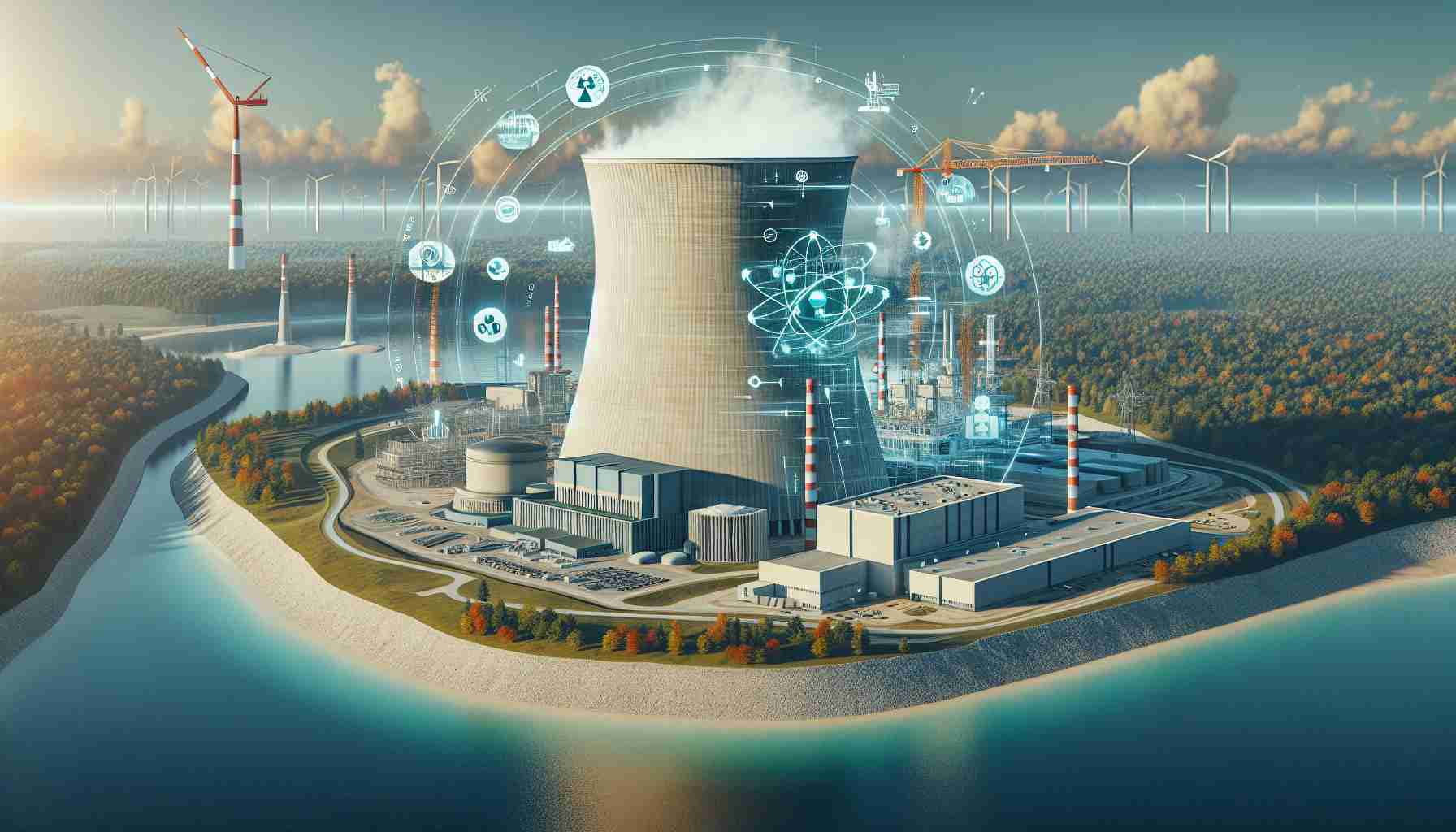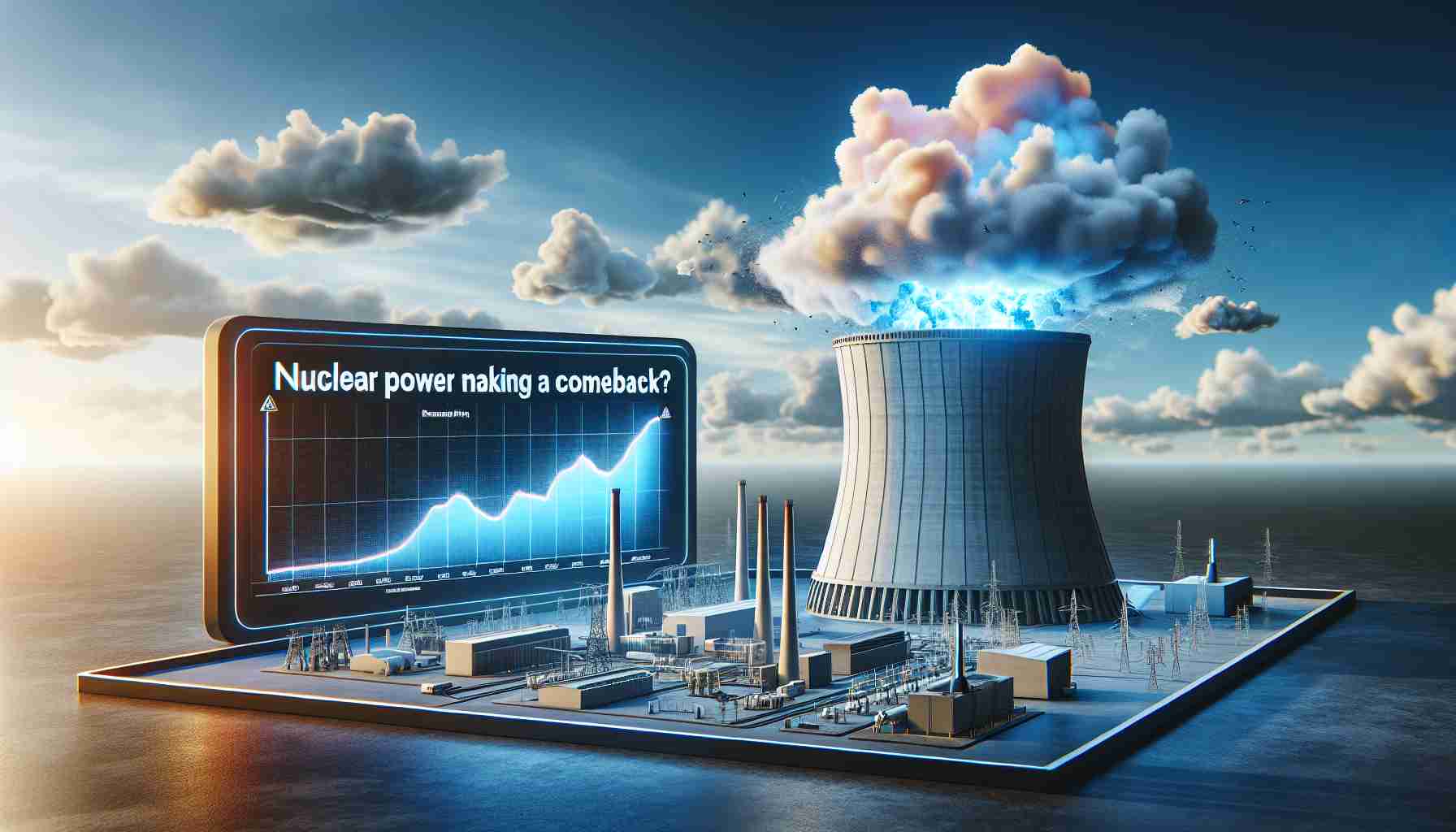Major Plans for Palisades Nuclear Plant
A historic shift in energy production is on the horizon, as the Palisades Nuclear Plant in southwest Michigan gears up for a long-awaited reopening. Following a significant commitment from the federal government, including a $1.3 billion grant program designed to support rural power cooperatives, this ambitious plan aims to revitalize the region’s energy landscape.
Wolverine Power Cooperative, based in Cadillac, is set to play a pivotal role, receiving approximately $650 million, while its Indiana counterpart, Hoosier Energy, will secure about $675 million. The state of Michigan is also contributing $300 million towards this comeback initiative, expected to restore around 800 megawatts of power—sufficient to supply energy to approximately 800,000 homes.
Originally operational since 1971, Palisades was shut down in May 2022 due to financial difficulties. Its potential revival not only promises economic benefits for the local community but also raises questions about environmental and health implications among residents and activists.
With growing demands for reliable electricity and a push to reduce greenhouse gas emissions, the importance of nuclear energy has come back into focus, especially as states strive to meet ambitious clean energy standards. Experts highlight the need for baseload power plants like nuclear facilities to maintain energy stability amidst the rise of renewable energy sources.
As the industry looks ahead, innovations such as small modular reactors could further transform energy production, making way for a new era in nuclear energy development.
The Broader Implications of the Palisades Nuclear Plant Reopening
The reopening of the Palisades Nuclear Plant represents more than just a regional energy strategy; it signals a potential turning point for the global energy landscape. Nuclear energy can play a critical role in the shift towards a low-carbon economy, as countries worldwide scramble to mitigate the impacts of climate change and comply with increasingly stringent emissions regulations. In a world where conventional fossil fuels are facing backlash, the resurgence of nuclear power could provide a remedy for an energy crisis intensified by geopolitical tensions and energy scarcity.
The revitalization of Palisades is not merely an isolated case but part of a larger trend signaling a renaissance of nuclear power in nations striving for energy independence. Alongside renewable energy sources, nuclear energy can provide the necessary baseload power—a constant supply that fluctuating renewables cannot ensure alone. This duality may enable a more resilient and diversified energy infrastructure, vital for managing increasing energy demands projected in the coming decades.
However, this prospect is accompanied by concerns regarding environmental sustainability and health. The potential for radioactive waste management challenges must be addressed, as does the need for stringent safety regulations to reassure communities. As the conversation around nuclear power evolves, it is imperative that societies critically assess not only the energy benefits but also the environmental and societal ramifications, ensuring a comprehensive approach to a sustainable future.
Revitalizing Energy: The Strategic Reopening of Palisades Nuclear Plant
Major Plans for Palisades Nuclear Plant
The Palisades Nuclear Plant in southwest Michigan is on the brink of a significant transformation with its planned reopening, following a substantial federal commitment that includes a $1.3 billion grant program aimed at bolstering rural power cooperatives. This initiative not only signals a shift in energy production but also highlights the renewed focus on nuclear energy as a vital component in achieving energy reliability and sustainability.
Wolverine Power Cooperative, which operates out of Cadillac, is set to receive about $650 million to assist in this revitalization effort. Likewise, Hoosier Energy, based in Indiana, will be allocated approximately $675 million. The state of Michigan is contributing another $300 million, bringing together substantial financial resources to restore nearly 800 megawatts of power—enough to energize approximately 800,000 homes.
Features of the Revitalization Plan
1. Economic Impact: The reopening of the Palisades Nuclear Plant is expected to provide significant economic stimulation in the region, creating jobs and enhancing local industry.
2. Energy Stability: With increasing reliance on renewable energy sources, the role of nuclear power is becoming crucial for maintaining a stable and continuous energy supply, addressing concerns about intermittent power generation from renewables.
3. Health and Environmental Considerations: The revival of the plant has stirred discussions regarding potential health and environmental impacts. Stakeholders, including residents and environmental activists, are closely monitoring the plant’s operational standards and safety measures to mitigate any adverse effects.
Pros and Cons of Nuclear Energy at Palisades
# Pros:
– Low Greenhouse Gas Emissions: Nuclear energy produces significantly fewer greenhouse gases compared to fossil fuels, aiding in the fight against climate change.
– High Energy Density: Nuclear power has a high capacity to produce large amounts of energy from a small footprint, enhancing land use efficiency.
# Cons:
– Nuclear Waste Management: The challenge of safely managing radioactive waste remains a critical issue, necessitating ongoing discussions and innovations.
– Public Perception: Historical incidents and the potential risks associated with nuclear power can lead to public apprehension, impacting local support.
Innovations in Nuclear Energy
The conversation around nuclear energy is evolving with promising innovations such as small modular reactors (SMRs). SMRs possess several advantages, including:
– Scalability: They can be deployed in smaller increments to match regional energy demand.
– Improved Safety Features: Modern designs emphasize enhanced safety protocols and reduced risk of accidents.
Pricing and Market Analysis
The estimated costs associated with the reopening of the Palisades Nuclear Plant reflect the financial commitment from both public and private sectors. Industry analysts suggest that investments in nuclear energy could result in stable energy prices in the long run, especially as global energy demands continue to escalate.
Future Trends and Predictions
As Michigan and the wider U.S. pursue aggressive clean energy goals, the resurgence of nuclear power is anticipated to play an integral role. Experts predict that:
– Nuclear energy will increasingly complement renewable energy sources, facilitating a more comprehensive and resilient energy mix.
– Continued investment in modern nuclear technologies, particularly SMRs, will reshape market dynamics and influence policy decisions in energy sectors.
The Palisades Nuclear Plant’s reopening may serve as a benchmark for similar projects nationwide, establishing a path toward sustainability and energy independence while fulfilling increasing demands for reliable electricity.
For further information on energy initiatives and innovations, visit energy.gov.
The source of the article is from the blog dk1250.com



